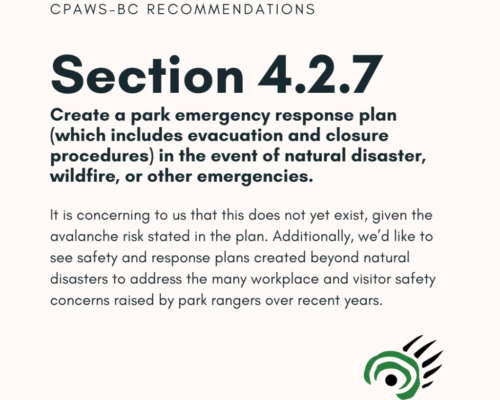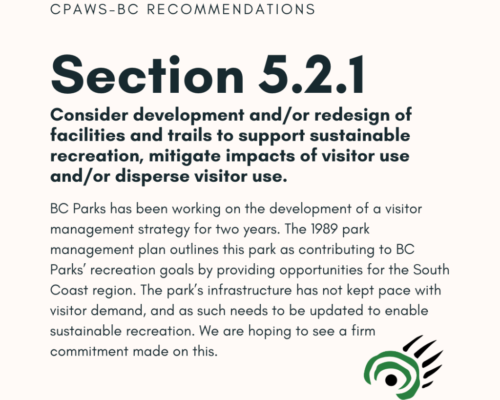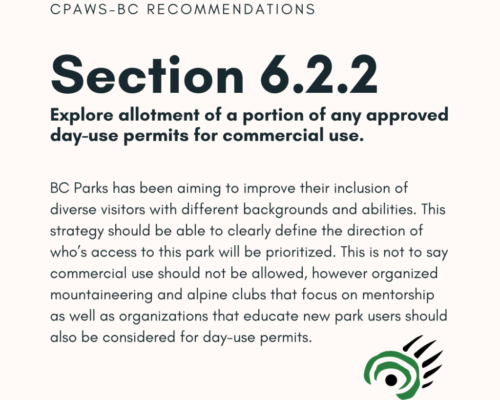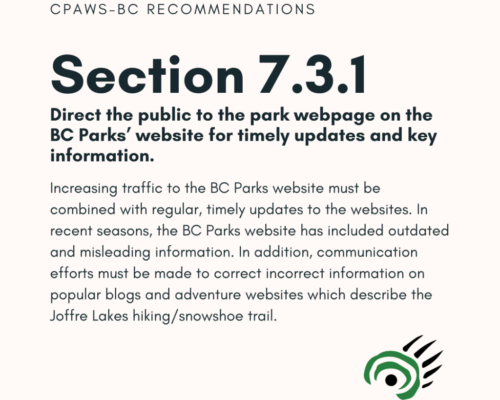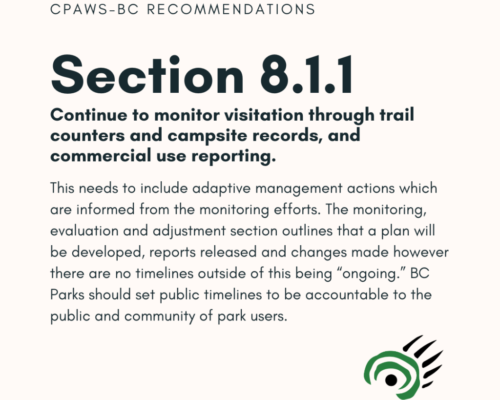New Visitor Use Strategy for Joffre Lakes Provincial Park

New Visitor Use Strategy for Joffre Lakes Provincial Park
BC Parks just released a new Visitor Use Management Strategy that was jointly created with Lílwat Nation and N’Quatqua and other key provincial ministries. Help us make sure BC Parks gets it right.
A surge in visitation to Joffre Lakes Provincial Park over the past decade is often blamed on only one force: social media. While social media offers easy access to information on stunning places to hike, camp and snowshoe, it does not deserve the entire burden of the public’s blame.
Joffre Lakes has seen a 222 percent increase in visitation since 2010, with close to 200,000 visitors in 2019 – the last year it was open to the public. This coincides with upgrades of the park’s 5km long trail which altered the route from being a challenging boulder-field to a steep but fairly smooth, and easy-to-navigate trail. It is not surprising that a trail that is perceived to be relatively safe, boasting stunning vistas, and just a few hours up the highway from Metro Vancouver, would attract massive crowds.
A sharp rise in demand for outdoor recreation in BC and across the globe has also contributed to the challenges which plague Joffre Lakes. The park was closed to the public throughout the pandemic to protect local communities from increased COVID risks. According to a 2014 Destination BC report, commercial outdoor adventures grew by 24 percent between 2001 and 2005. Within a decade, BC Parks saw nearly an additional 5 million, or 23 percent, rise in annual visitors between 2014 and 2019.
All this is underscored by a critical fact: BC Parks has been dramatically underfunded for two decades. This lack of funding has generated numerous challenges for parks managers and visitors alike. A lack of resources stalls the creating and updating of management plans to and cuts out environmental monitoring within the parks. Staff shortages remain rampant, leaving rangers and planners overworked. Low budgets mean that infrastructure upgrades and expansion plans are nowhere in sight
What’s in the strategy?
- Increase presence of Lílwat Nation and N’Quatqua within the park through a Stewards program, interpretive signage that includes local Indigenous culture and history, and exploration for joint monitoring, economic opportunities, and collaborative management.
- Support Lílwat Nation and N’Quatqua traditional uses by protecting harvest areas, installing restoration barriers, and supporting community access.
- Mitigate impacts on vegetation and wildlife through visitor education and enforcement of restrictions, trail rehabilitation, creating viewing platforms at lookouts, gathering baseline data and monitoring changes, and exploring recreation monitoring and environmental projects through partnerships.
- Address illegal parking with the Ministry of Transportation and enforcement by the RCMP, encouraging carpooling, sharing shuttle information when/if arranged by third parties ,such as Parkbus, increasing the parking lot from 250 to 350 spaces and improving the parking lot layout “as needed.”
- Limit the number of people who can access the park during peak months by implementing a day-use permit, encouraging people to visit in less busy times, limiting commercial groups, and enforcing backcountry reservations.
- Educate visitors and the general public as to proper park etiquette, trip planning and preparedness, while monitoring activities through trail counters, visitor surveys and external partner data.
Visit the BC Parks website to view the full plan.
Overall, what do we think about the draft strategy?
- We are extremely happy with two aspects. First, we applaud the overdue inclusion of the original stewards of this area, Lílwat Nation and N’Quatqua, as critical planning partners. Secondly, we are pleased that BC Parks is undertaking this intensity of planning to improve park safety, visitor experience and meet conservation goals.
- We are disappointed in the lack of detail that the strategy offers. The plan has been in development for two years and we had hoped . However, we have spent some time unpacking the strategy to offer recommendations. We hope our insights help BC Parks make the necessary strategy improvements.
- Here are our detailed recommendations to further improve this strategy to create more equitable access, conserve the local natural and cultural values, and increase safety for visitors and staff alike.
CPAWS-BC Recommendations:
Full CPAWS-BC Consultation Feedback: Joffre Lakes Visitor Use Management Strategy here.
We encourage you, the park community, to submit your own feedback by using the BC Parks short survey link while the consultation continues until 4 pm on April 4, 2021.


